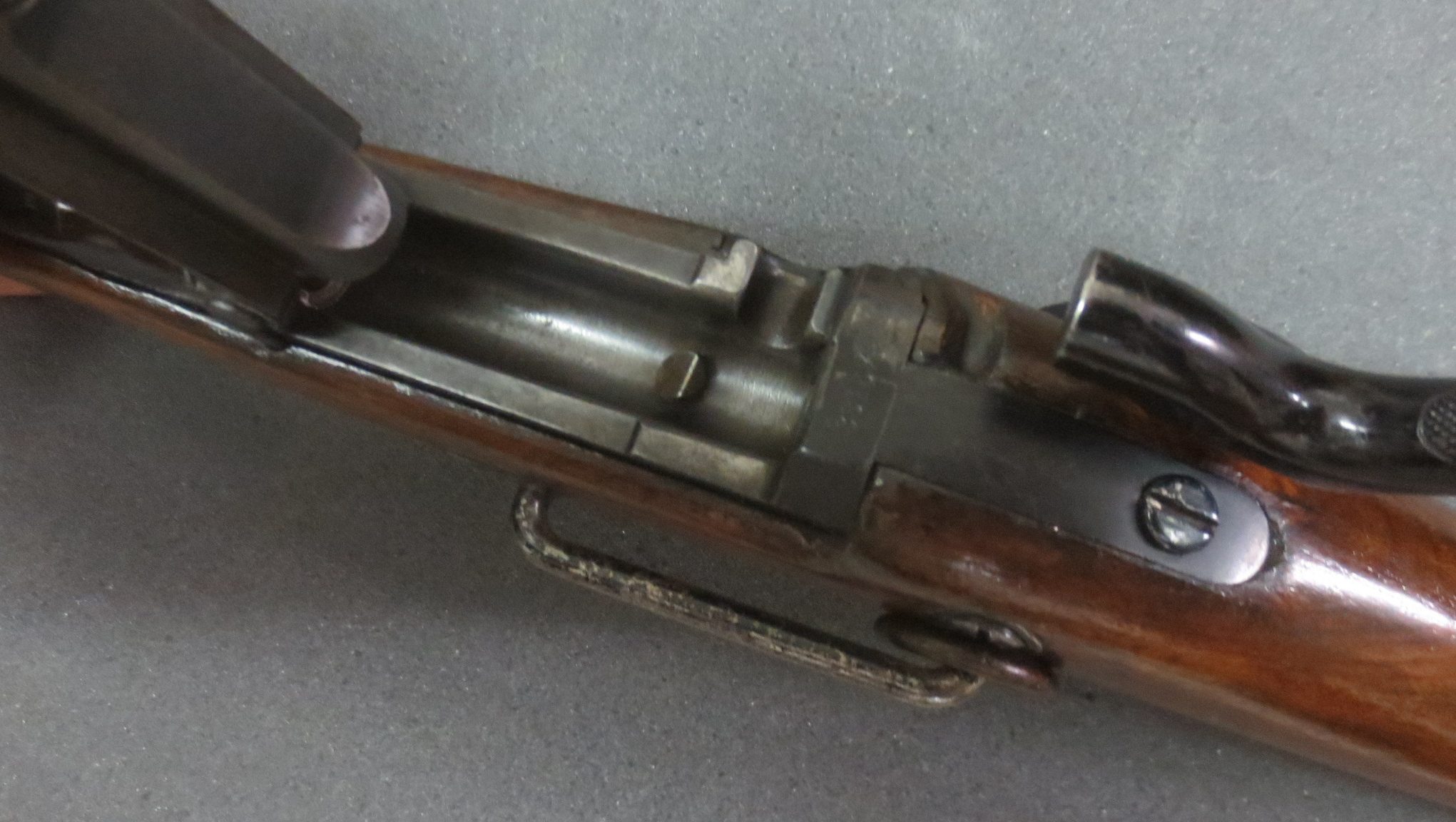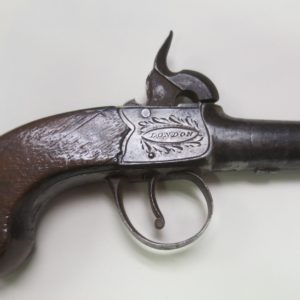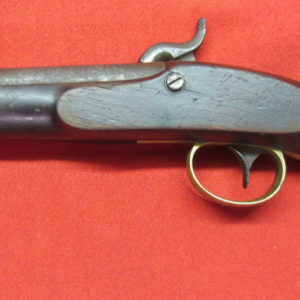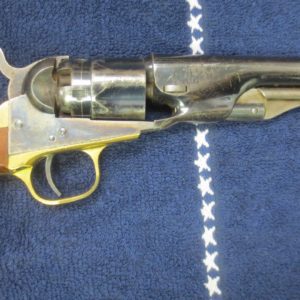Description
These weapons rarely turn up unless found in old collections, and this one popped out a few months ago in Pennsylvania from a collection started in the 1940s. It is #381674 as manufactured in late 1886 or early 1887 and is all complete and original. The bore and action are both very good to fine and markings are clear and crisp, right down the the “C” on the rear sight. At some point in time somebody PAINTED the metal surfaces with gloss black enamel and clear coated the walnut stock, which comes off very easily—I sell them as I find them, however, so as of now it is still painted. Springfield Research Service notes bracketing weapons (#381420 and #381903) as having been issued to the 4th Cavalry, so there is a high probability this example was issued to the same unit.
If you want a REAL Indian Wars era cavalry weapon, here ya go!
“Meanwhile, the Indians in Mexico had renewed their marauding in Texas. In 1878 General Sherman, at the insistence of the Texans, transferred Mackenzie and six companies of the 4th Cavalry to Fort Clark. This time Mackenzie led a larger and more extensive expedition into Mexico, restored a system of patrols, and reestablished peace in the devastated region of South Texas.
Outside Texas, Mackenzie and the 4th Cavalry administered and controlled the Kiowa-Comanche and the Cheyenne-Arapaho reservations for several years, and, after the defeat of George Armstrong Custer’s command at the Battle of Little Bighorn in June 1876, forced Crazy Horse and his band of Sioux and the Northern Cheyennes to surrender. In the autumn of 1879, Mackenzie with six companies of the 4th Cavalry subdued the hostile Utes in Southern Colorado without firing a shot and in August 1880 forced them to move to a reservation in Utah Territory.
Immediately thereafter, the 4th Cavalry was transferred to Arizona Territory, where Mackenzie was to assume full command of all military forces in the department and subdue the hostile Apaches. Within less than a month, the Apaches had surrendered or fled to Mexico, and on 30 October, Mackenzie and the 4th Cavalry were transferred to the new District of New Mexico. By 1 November 1882, when W. B. Royall replaced Mackenzie as colonel, the 4th Cavalry had forced the White Mountain Apaches, Jicarilla Apaches, Navajos, and Mescaleros to remain peacefully on their respective reservations.
From 1884 to 1886 the 4th Cavalry again operated against the Apaches in Arizona and helped capture Geronimo. Particularly noteworthy was B troop’s pursuit of Geronimo into Northern Mexico led by Capt. Lawton and Surgeon Leonard Wood.
Sergeant James T. Daniels of the 4th Cavalry was a recipient of the Medal of Honor for his actions during the Cherry Creek Campaign in March 1890 against the Apaches in Arizona.
In 1890 the regimental headquarters was moved to Fort Walla Walla, Washington. The regiment split, with half going to the Department of the Columbia, and half to the Department of California at the Presidio of San Francisco.”








